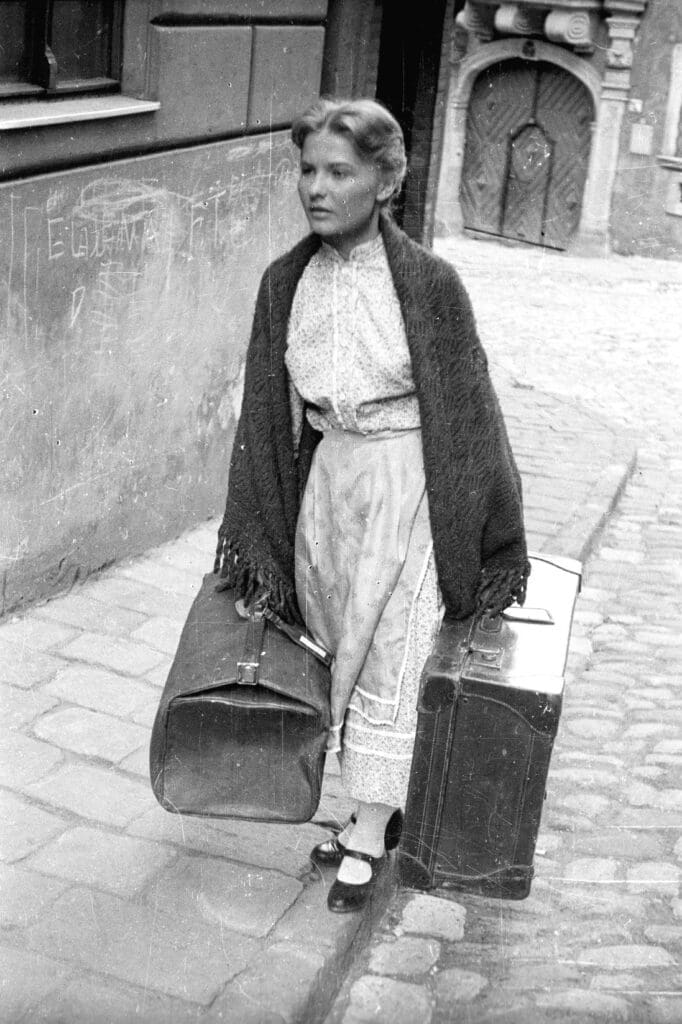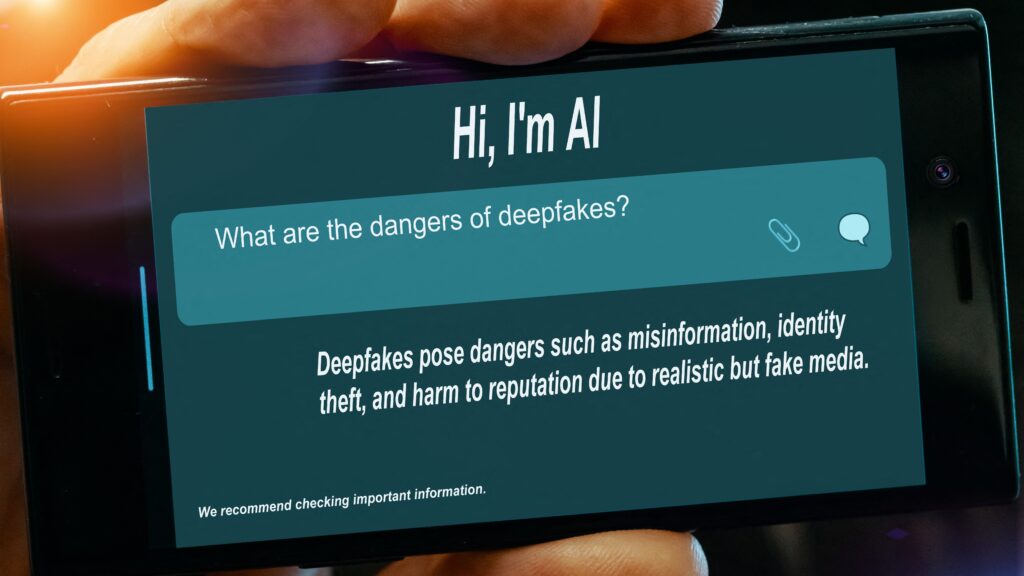This article was published in Vol. 4 No. 1 of our print edition.
‘Hungarian society at this time objectifies Anna so completely that she is seen only as a harmless maid and not as a complex individual’
Today, mental illness is a popular topic, especially among young people. Compared to the past, people speak more freely about mental illnesses (including ones they may be diagnosed with) and have to worry less about being ostracized. While anyone with a mental or emotional disorder deserves help and compassion (and to be able to be candid about their condition without fear of discrimination), there are negative consequences from this present era of mental illness acceptance. One consequence is the possibility of people being misdiagnosed and others being over-diagnozed. The story of the maid Anna Édes is the story of undiagnozed or unrecognized mental illnesses and their consequences, in contrast to today’s societies, primarily in the West, where mental illness is advocated to the point of virtue and people are ‘pressured’ to have mental illnesses as a mark of social status. Another consequence is the spreading idea that everyone has a mental or emotional disorder and must identify as such whether this is the case or not. In the past, society at large had a different view. Mental and emotional issues were not taken sufficiently seriously. There are still people who deny the possibility of mental and emotional disorders existing. Both extreme points of view toward mental illness are harmful.
Anna Édes (1926) is perhaps the best-known novel by renowned Hungarian novelist and literary figure Dezső Kosztolányi (1885–1936). Kosztolányi was a founder of the influential literary journal Nyugat (West), which gave him distinction in terms of accepting and advocating Western and modern influences in Hungarian literature. He was known for combining new cultural phenomena and ideas with intimate studies of humanity. According to the Encyclopedia Brittanica, ‘Kosztolányi’s work reveals him to be a sympathetic observer of human frailty with a gentle humour and a penchant for the macabre.’1 As such, Anna Édes is a case study of mental illness during a time when Hungarian society did not take such disorders seriously, and, a guide for the present generation to learn from past mistakes and extend compassion toward those truly suffering from mental illness.
‘Kosztolányi…implies that Anna was already mentally unstable, and was misunderstood, unloved, and dehumanized, all factors which could have subconsciously conditioned her to commit murder’
To begin with, Hungary’s historical political and social situation during the period in which the novel is set have an influence on Anna’s fate. Hungary had just lost a world war and was no longer co-ruling an empire with Austria. Hungary’s fate was being decided by foreign powers, and its territory (soon to be reduced by two thirds) was occupied by foreign soldiers. Having entered the war as part of the Austro-Hungarian Empire, defeat led to disintegration and turmoil within the various nation-states which resulted. Hungary experienced first a socialist revolution (it had, of course, been a monarchy) and then a communist one. Anna Édes begins as that period ends thanks to the intervention of the Romanian army; in its first line, Communist leader Béla Kun is pictured fleeing the country in an aeroplane.2 As a result of these events, the Hungarian people felt a loss of control and a sense of uncertainty about their future, as well as increasing fear and anxiety due to increasing social pressure. The immediate reaction of the character of Mrs Vizy, Anna’s eventual employer, exemplifies the fears of the middle class during this time.
The dialogue between Mrs Vizy and her former maid, Katica, represents the inability of the Hungarian middle class to accept and comprehend the changing political and social order: ‘“They say tonight we will be occupied. By the Romanian army.” “Nonsense. The great powers would never allow it. It will be an allied army of occupation: Italians, French, and English.”’3 Mrs Vizy cannot believe that the Romanians, the former subjects of Hungary, would ever rule Hungary as victors. This disbelief on the part of the Hungarian middle class, particularly Mrs Vizy, extends to Anna herself. Mrs Vizy believes she has obtained a perfect robot, a device lacking human qualities whose only purpose and desire is so serve her employers.
Anna’s background is a major catalyst for her underlying mental and/or emotional issues. She was born in a rural Hungarian village at the turn of the twentieth century. As a poor woman, her life has already been determined for her. Anna has no access to higher education and is by and large treated by her family as a cog in a machine. Her work ethic as a maid is excellent because she has been conditioned to work and little else. The narrator reveals very little about her thoughts, imagination, or aspirations. Anna is constantly reacting to what others do to her or how they affect her environment. She exhibits strange behaviour, such as being silent for long periods of time, even when addressed by her employers. Contrary to her extreme silence and social awkwardness, she erupts into unexpected fits of rage (such as chasing her tyrannical stepmother with an axe). No one thinks to investigate why Anna is the way she is because they take her station in life for granted and assume she will always be a dutiful maid, and possibly a wife. Hungarian society at this time objectifies Anna so completely that she is seen only as a harmless maid and not as a complex individual.
The Vizys embody Hungarian bourgeois attitudes toward servants in the late 1910s and 1920s. They are vain and shallow social climbers who exhibit very little charity to anyone besides a select number of their wealthy associates. The mental and emotional wellbeing of their maids is the least of their concerns. Mr Vizy is largely dismissive of the staff and is mainly career-focused, while Mrs Vizy is engaged in a continual neurotic quest to find the perfect maid, and always fires them for failing to meet her unrealistic standards. When she learns of Anna’s existence and her excellent character references, she conceives of Anna as an inhumanly perfect girl who will satisfy her every wish, to the point of beatification. When Mrs Vizy and Anna finally meet, the former is disappointed by the common appearance and timid attitude of the latter. While Anna immediately works harder than any of Mrs Vizy’s previous maids, the latter still tries to find fault with Anna and berates her over small mistakes. Eventually, Mrs Vizy is satisfied when she realizes that Anna will work hard consistently, not steal, and not take a lover. However, Mrs Vizy’s approval extends only to Anna’s suitability as a maid, not to her value as a person.
As time goes by, Anna remains the same. She fulfils every request her employers make and has no life outside of her work. She initially feels great unease about living and working in the Vizys’ house due to an unpleasant smell of camphor oil permeating the building, which nearly causes her to quit. Furthermore, Anna eats nothing in the house and refuses food on several occasions when Mrs Vizy offers it to her. Anna’s occasionally odd behaviour does not concern her employers for long, as her work results eclipse her peculiarities. Later, Anna is presented to the friends of the Vizys as the perfect maid. They watch her like an exotic animal and patronize her. Only the kindly Dr Moviszter shows her true kindness and states that all humans deserve true love and respect (to the annoyance and amusement of his friends). While Mrs Vizy especially continues to praise Anna’s qualities and expresses admiration toward her, this never extends beyond the sentiment or praise a human might direct toward a smoothly operating machine.
In addition to being used as a beast of burden, Anna is also used for sexual gratification. The Vizys temporarily take in their spoiled and flippant nephew Jancsi when he starts work at a bank. While his aunt and uncle are away for several days, he attempts to seduce a reluctant Anna and eventually breaks down her resistance. When this results in a pregnancy, he callously urges her to have an illegal abortion, which causes her severe illness and nearly blinds her. Again, she is not asked about her preferred course of action. Perhaps her only chance of motherhood has passed. Jancsi automatically assumes that her position as a maid and his as a ‘gentleman’ gives him the right to avoid fathering a mixed-caste child, and, that Anna has no choice but to concede to the wishes of her social superior. The Vizys never learn of Anna and Jancsi’s indiscretion, or of the resultant abortion. Eventually, Jancsi tires of Anna and, disgusted by his former passion for her, withdraws from her life.
Anna’s potential for marriage is also denied her. When a chance acquaintance proposes to Anna, all her friends and associates urge her to take the course of action they see fit, and never ask her what she wants and what she thinks is best for her. Most of all, Mrs Vizy is terrified of the prospect of losing Anna’s services, and goes to great lengths to dissuade her from marrying. Finally, Mrs Vizy feigns illness due to the possibility of losing Anna and berates her for being ungrateful for the Vizys’ ‘care’. While Anna is not in love with her suitor and his career as a chimney sweep will not lift her from poverty, she resents Mrs Vizy for intruding into her personal life. Nevertheless, Anna gives in to her mistress’s pleas and turns down her only offer of marriage.

All of these indignities lead Anna to the breaking point. One evening, after a party (at which Jancsi is a guest and Mrs Vizy harshly berates Anna over a trivial matter), Anna murders the Vizys in their sleep. She does not remember committing the deed and cannot give the police any motive or explanation. Anna shows only remorse and horror. Her lawyer convinces the jury to sentence her to fifteen years’ imprisonment rather than the gallows due to her spotless record leading up to the murders, and on the belated realization that she may suffer from a mental disorder. Although her life has been saved, her story ends before her prison sentence begins. The reader is left to assume that the remainder of Anna’s life in prison and beyond, overshadowed by her crime, will not be a happy one.
Kosztolányi never states why Anna killed the Vizys, but implies that Anna was already mentally unstable, and was misunderstood, unloved, and dehumanized, all factors which could have subconsciously conditioned her to commit murder and develop a deep, unrealized sense of hatred and self-preservation. Kosztolányi’s assessment of the wages of ignorance and apathy toward mentally disturbed people was radical in 1926. Today, the themes of this story are socially acceptable and commonplace. Classism and mental illness are widely accepted as social ills, and are freely discussed. However, has society taken this candid attitude toward mental illness to an irresponsible level?
Today, many people are open about the mental illnesses they have, or imagine they have. In many societies, especially in the West, the subject of mental illness is no longer ignored or forbidden. This sentiment is especially true for younger people. The American organization NAMI (National Alliance on Mental Illness) provides extensive help for Americans who have been diagnosed with mental illnesses, including young adults and teenagers. This includes the Teen and Young Adult Helpline (NAMI) to call in distress, a means of communication which might have helped Anna Édes. Mental Health America provides some sobering statistics on the prevalence of mental illness in the United States. According to the organization’s website, ‘19.86% of adults are experiencing a mental illness. Equivalent to nearly 50 million Americans. 4.91% are experiencing a severe mental illness.’4 Another study conducted by the National Library of Medicine, located in Bethesda, Maryland, shows that Western societies report higher rates of prescriptions for psychotropic medicine.5 This category of medicine is often used for treating depression and anxiety. This study concluded that populations in Eastern Europe, Asia, and Africa report lower uses of psychotropic medicine and diagnoses of mental disorders. While such data does not automatically confirm that people in non-Western nations uniformly suffer from lower rates of mental illnesses (rather that that fewer mental illnesses are reported and diagnosed), populations in the East generally do not normalize or even encourage a culture of mental illness as is common in the West. Nevertheless, opposite problems in the East mirror the sociological issues in Anna Édes.
Generally, people in Eastern cultures are less likely to believe in or acknowledge the existence of mental illnesses. As Anne Krendl and Bernice Pescosolido point out, ‘We examined whether stigma was higher in the East than West. Furthermore, we hypothesized that the link between prejudice and discriminatory potential in the East was due, in part, to cultural differences in the attributions about mental illness.’6 While there is no discussion of mental illness in Anna Édes, the reader can assume that Anna would be denied help for any potential condition she may have, given that society repeatedly ignores her and treats her as an object. She is expected to conform to her employment and social status by being totally passive and accepting of what her superiors and family have decided for her. In this regard, Hungary in the early 1920s was similar to a present-day Eastern society.
Western society, by contrast, may overly validate mental illness in a manner that is equally detrimental as Eastern societies’ neglect of mental illnesses, just as Western societies in the past neglected or were ignorant of the existence of mental illnesses. According to the National Library of Medicine, ‘while 47.4 and 39.3% of the populations from the USA and New Zealand, respectively, have a history of mental disorder, Nigeria shows the lowest prevalence (12.0%) among countries. Other epidemiological studies somehow confirm the low prevalence of mental disorders, e.g., depression and anxiety, in African countries compared to the Western world (4–6).’7 Again, one cannot automatically deduce that all Africa suffers less from mental illnesses based on those who report having mental illnesses, but nevertheless, the results from the West may be an exaggeration, or results that are exaggerated by cultures which encourage mental illnesses. One factor may be the increased use of harmful substances in the West compared to non-Western countries. In addition, the values of individualism vs. collectivism may be a factor for higher levels of reported mental illnesses in the West.8
While the collectivist society of Hungary in the Trianon years ultimately led to horrific consequences for Anna and her employers, extreme individualization can be similarly harmful. Feelings of loneliness and uncertainty, and neglect from a community, can do as much damage as an oppressive community which dictates every aspect of a community-member’s life. As Dimitri Marques Abramov and Paulo-de-Tarso de Castro Peixoto put it, ‘Therefore, the high incidence of many mental problems in Western countries might be centered on some contemporary values of their culture, which might be foreign to human nature and human neurodiversity. At the core of this problem would lie individualism and materialism, which might even admit a collective alignment, yet the experience of a collective existence has been lost.’9 The neglect of the innate human need for belonging to a group can cause mental distress in the same way as a group that is overly involved and dictatorial in an individual’s life. Individuals, particularly adolescents, who search for outlets to express or project their problems and insecurities are increasingly turning to a dangerous mode of communication, social media.
‘If she was a real girl living in 2024, she might instead fall victim to the trend of self-diagnosis and not only being aware of her mental illness, but proclaiming it to the entire world and receiving praise or advice from an army of unqualified followers’
By using social media, those with mental illnesses are more likely to increase their burdens than to alleviate them. As Western societies begin to romanticize death and depression, social media is often the catalyst for fatal results: ‘The case of Molly Russell, a British teenager who took her own life in 2017, has resurfaced in UK media following a recent inquest into the circumstances of her death. The inquest found that the 14-year-old was following pages online which “romanticized self-harm.” The coroner concluded that no one should be exposed to content of this kind on social media, especially not a child.’10 Besides self-harm, dysfunction and mental illnesses are increasingly being viewed as a ‘beautiful tragedy’ that makes suffering supposedly beautiful through collective pain, while negating the suffering itself.11
Furthermore, young Westerners with no medical qualifications are increasingly diagnosing themselves or other people as being ‘mentally ill’ for deviating from the norm. ‘Those who are more exposed to media will tend to equate any trait even slightly deviating from the collective ideal as equivalent to mental illness. Those who are less exposed and are taught that emotional affairs are not important will remain adamant that mental illness is only plausible in the most extreme of cases.’12 Ironically, this logic brings us full circle, returning us to the issues raised by Anna Édes, a character who was not only ignored and unloved, but also overly romanticized, by the society in which she lived. Mrs Vizy views her as the pure, faithful servant, Jancsi as the immoral, lower-class seductress, her uncle as the sturdy and reliable country girl who never objects. Only Dr Moviszter recognizes the truth: that she is a human being. He feels pity for her but does not glamorize who she is or her situation in life.
Today, many young people are unwilling to be healed of their pain, but instead romanticize their pain and chaos. According to one article, ‘you can find teens on Tumblr or TikTok posting quotes and images revolving around mental issues that seem to portray it in a way of beauty or allure. While this itself may not seem like an issue, this actually promotes a distorted view. Such portrayals contribute to a culture that promotes the idea that mental illness itself is a manner of alternate self-expression rather than an actual issue.’13
In conclusion, Anna Édes gives modern readers insight into both negative extremes for dealing with mental illness, and serves as a contrast to the direction that Western society is taking in regard to this issue. While Anna Édes is never diagnosed with a mental illness, and the only acknowledgement of the possibility of her being mentally unstable is to save her from execution and instead imprison her, we can assume today that Anna’s story would at least have a somewhat happier ending given the resources available today, and the acknowledgement of mental illnesses. However, if she was a real girl living in 2024, she might instead fall victim to the trend of self-diagnosis and not only being aware of her mental illness, but proclaiming it to the entire world and receiving praise or advice from an army of unqualified followers. In extreme circumstances, Anna’s fate could be the same. Young people in today’s societies also have a choice: they can choose to be completely oblivious to any mental issues if they have them, proclaim them to the world and not seek the care that they need, or learn to cope and possibly be healed of their conditions to the best of their abilities. Healing can only come with good and pure intentions, from people such as Dr Moviszter. Perhaps that is what those who are suffering from mental illnesses need now, a Dr Moviszter in their lives who neither ignores nor romanticizes their condition, but sees them first and foremost as humans.
NOTES
1 ‘Dezső Kosztolányi, Facts, Biography, & Poems’, Encyclopedia Britannica, www.britannica.com/biography/Dezso-Kosztolanyi, accessed 11 January 2024.
2 Anna Édes, 1streading.wordpress.com (2016), accessed 11 January 2024.
3 Dezső Kosztolányi, His Excellency, the Comrade and Her Ladyship, Anna Édes (London: New Directions Paperback Limited, 1993), 7.
4 Mental Health America, The State of Mental Health in America (2023), https://mhanational.org/issues/state-mental-health-america, accessed 12 January 2024.
5 Ruth Brauer et al., ‘Psychotropic Medicine Consumption in 65 Countries and Regions, 2008–19: A Longitudinal Study’, The Lancet Psychiatry (2021), www.ncbi.nlm.nih.gov/pmc/articles/PMC9766760/, accessed 12 January 2024.
6 Anne C. Krendl, and Bernice A. Pescosolido, ‘Countries and Cultural Differences in the Stigma of Mental Illness: The East–West Divide’, Journal of Cross-Cultural Psychology (2020), https://journals.sagepub.com/doi/full/10.1177/0022022119901297, accessed 12 January 2024.
7 Brauer et al., ‘Psychotropic Medicine Consumption in 65 Countries and Regions.’
8 Krendl and Pescosolido, ‘Countries and Cultural Differences in the Stigma of Mental Illness.’
9 Dimitri Marques Abramov and Paulo-de-Tarso de Castro Peixoto, ‘Does Contemporary Western Culture Play a Role in Mental Disorders?’, Frontiers in Psychiatry (2022), www.ncbi.nlm.nih.gov/pmc/articles/PMC948985, accessed 13 January 2024.
10 Zuzana Revayova, ‘Encouraging Insanity: How Social Media Is Glorifying Mental Health Disorder’, Adamah Media (2022), https://adamah.media/encouraging-insanity-how-social-media-is-glorifying-mental-health-disorders, accessed 13 January 2024.
11 Revayova, ‘Encouraging Insanity.’
12 Revayova, ‘Encouraging Insanity.’
13 Revayova, ‘Encouraging Insanity.’
Related articles:







